In this guide you’ll find out what makes a good wildlife lens and I also list my top 12 best lens recommendations for shooting wildlife with a Sony mirrorless camera in 2025.
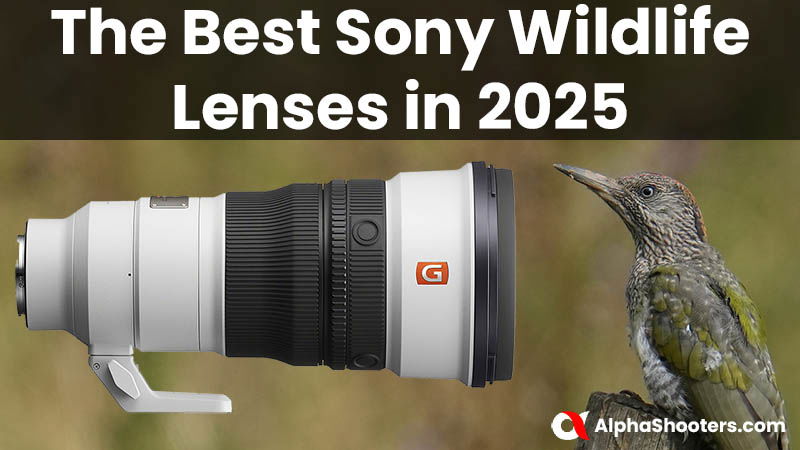
Quick Menu
What Makes a Good Wildlife Lens?
The most popular and easiest way to photograph wildlife is with a long telephoto zoom or prime lens, or a macro lens if you enjoy shooting extreme close-ups.
However, there are many factors to consider such as focal length, aperture, weight, focusing speed and of course price.
The focal length is one of the most important factors. The ideal focal length of a telephoto lens depends on how large or shy the animals you are wanting to photograph are.
If you are looking to photograph mainly birds, the optimal focal length especially for small birds is going to be 500 to 600 millimeters.

If you are using lenses of 400mm in focal length or less, you will often find yourself cropping more heavily when shooting smaller subjects, which may not be a problem if you are shooting with a high megapixel camera such as the Sony A1 or A7RV.
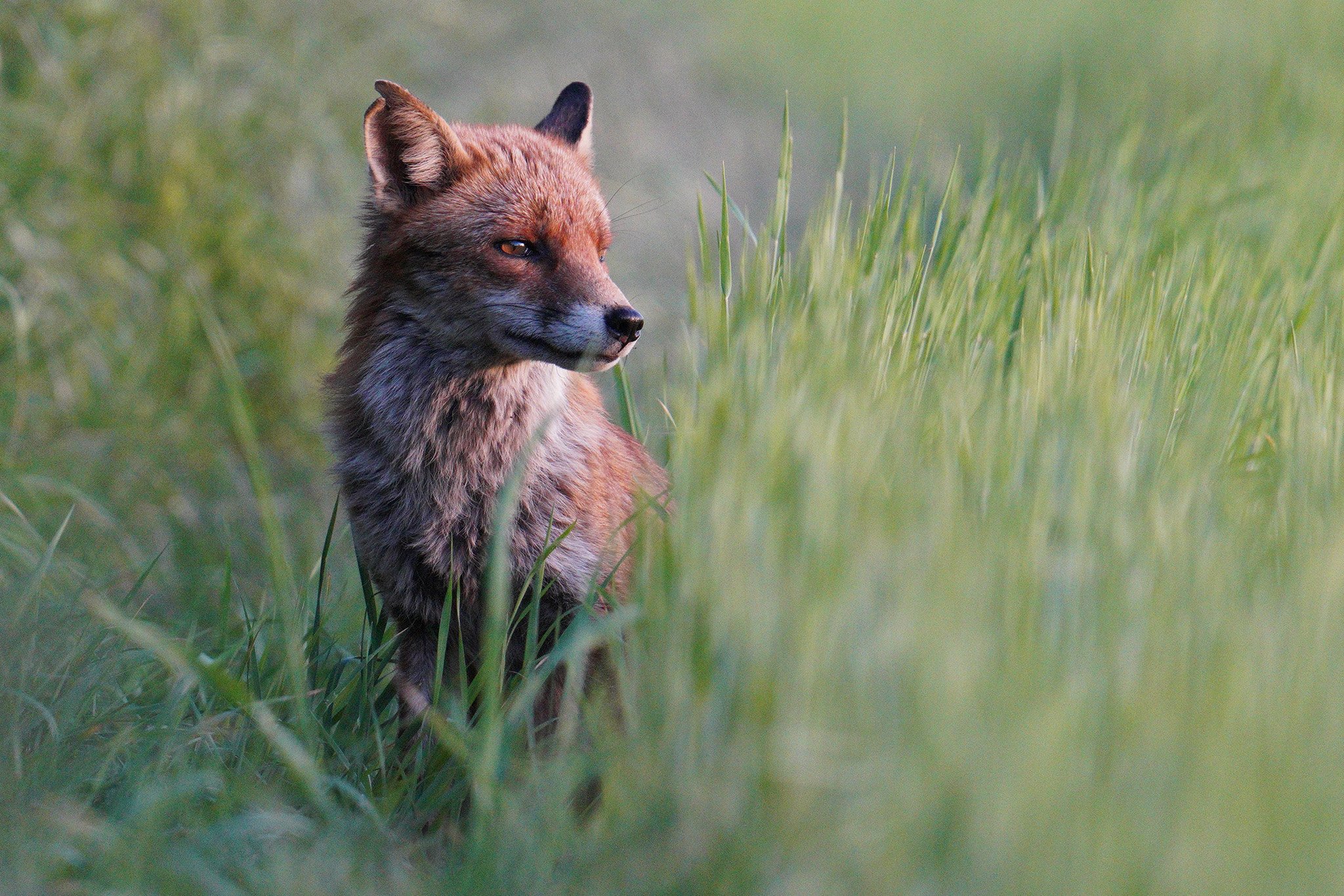
The next important factor is the maximum aperture. A lot of wildlife activity especially birds is in the early morning when the light levels are a lot lower. So ideally you’ll be wanting to shoot with an aperture no smaller than F5.6. That said, with post processing programs such as Topaz Denoise you can easily clean up shots that have been taken with much higher ISO numbers.
Typically long telephoto lenses in the 500-600mm range with a wide maximum aperture are not only very large in size but are also very heavy. The Sony FE 600mm F4 GM lens for example weighs in at 3,040 grams. Although considerably lighter than big SLR telephoto lenses you will still most likely get tired shooting with one of these monsters all day long, unless you are shooting from a hide with the lens mounted to a tripod head.

Thankfully there are lighter options available such as the Sigma 500mm F5.6 DG DN OS Sports lens that weights just 1,515 grams with the lens hood attached.
Your budget will most likely ultimately dictate which lens you purchase, since the Sony FE 600mm F4 GM lens costs around $12,998. Compared to just $2,999.00 for the Sigma 500mm F5.6 or $1,998 for the Sony FE 200-600 F5.6-6.3.
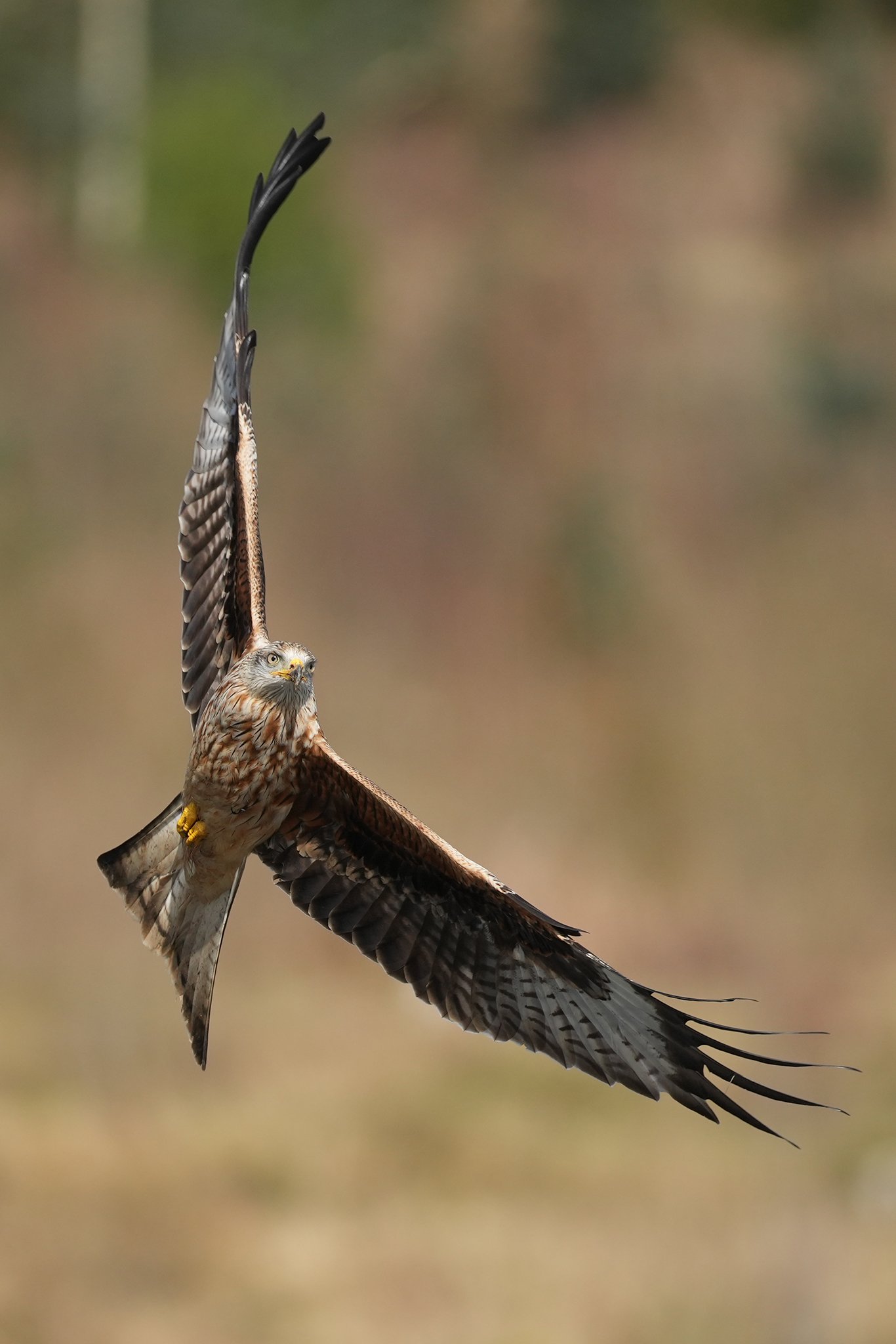
Other important qualities of a wildlife lens include the lens’s focusing speed and level of weather sealing.
If you want to shoot birds in flight then having a lens that focuses quickly can make the difference between getting the shot or not.
And since wildlife photography will often expose your gear to tough and wet conditions, having a lens that is weather sealed will give you the confidence to keep shooting no matter what the weather gods throw at you.
Best Sony Wildlife Lenses
So with that little introduction our of the way, here are my top 12 best Sony lens recommendations for wildlife photography in 2025.
For even more options you might want to visit my Sony Telephoto Zoom Guide or my Sony Telephoto Prime Guide.
This list is simply sorted by focal length (descending) not preference or popularity.
1. Sony FE 400-800mm F6.3-8 G OSS Lens
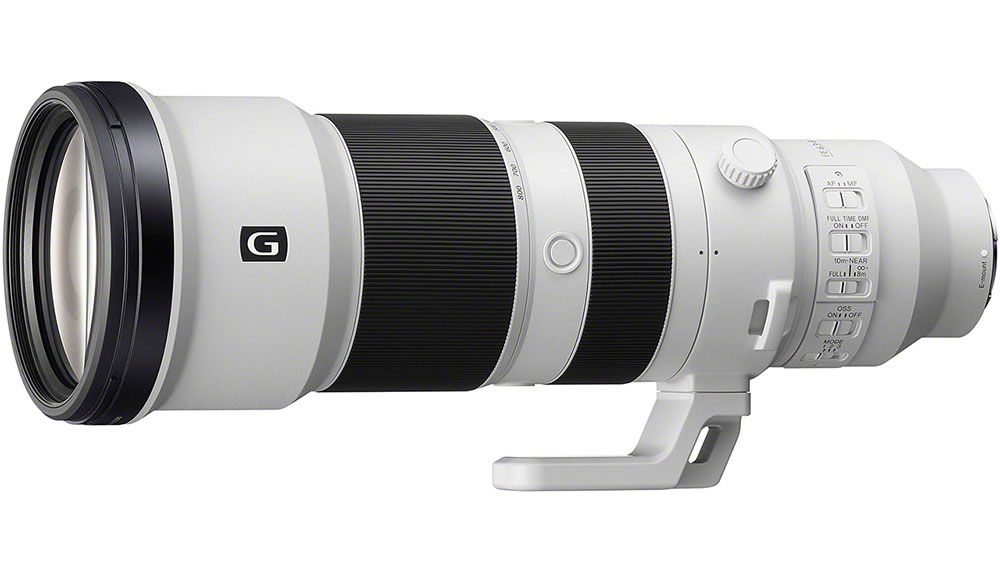
If 600mm doesn’t offer enough reach then the FE 400-800mm F6.3-8 G OSS lens adds an additional 200mm along with the latest linear focus motors.
The Sony FE 400-800mm F6.3-8 G OSS is an internal zooming lens which has a focal length starting at 400mm and ending at 800mm. It has a variable aperture of F6.3-8. From 400-482mm the aperture is F5.6, from 483-590mm is drops down to F7.1 and from 591-800mm it’s at F8.
The 400-800 is the slightly larger than the 200-600 lens and measures 119.8mm in diameter x 346mm in length (4-3/4 x 13-5/8 in.). It weighs 2475 g (87.4 oz.) without the tripod foot and lens hood. So the 400-800 is around 28mm longer and 8.3mm wider in diameter than the 200-600. The 400-800 also weighs around 360g (12.7 oz.) more than the 200-600.
The 400-800 is constructed of 27 elements in 19 groups, with 6 ED (Extra-low Dispersion) elements to help control chromatic aberration. There’s an 11-blade circular aperture and a 105mm filter thread on the front. It’s weather-sealed and has a fluorine coating on the front element.
At 400mm the minimum focusing distance is 1.7m (5′ 7″), this increases to 3.5m (11′ 6″) at 800mm.
It is compatible with both of Sony’s 1.4x and 2x teleconverters. The 1.4x increases the maximum reach to 1120mm with the loss of one stop of light and the 2x takes it to 1600mm with two stops of light loss.
On the lens body there are three customizable buttons as well as switches to control the focus mode, focus limiter and optical image stabilization.
Just like the 200-600 the zoom mechanism is internal so that the length of the lens does not change when zooming.
For A9 III owners you’ll be happy to know that the 400-800mm is compatible with the 120fps burst mode thanks to the autofocus which is handled by two linear motors. Focus continues uninterrupted even while zooming so important moments are never lost.
The lens hood features a new design with a lock button for easy attachment and removal, and a filter opening for easy operation of a filter.
If you are undecided about the 200-600 or 400-800 then my 400-800 vs 200-600 Comparison might help you to decide.
Key Specs
| Model Name: | SEL400800G |
| Format: | 35 mm full frame |
| Focal Length (mm): | 400-800mm |
| Angle of View (35 mm): | 6°10′-3°10′ |
| Maximum Aperture: | F6.3-8 |
| Minimum Aperture: | F36-45 |
| Lens Groups / Elements: | 27 elements in 19 groups |
| Aperture Blades: | 11 (rounded diaphragm) |
| Minimum Focusing Distance: | 1.7-3.5 m(5.58-11.5 ft) |
| Maximum Magnification Ratio: | 0.23x |
| Lens Image Stabilization: | Yes |
| Filter Diameter: | 105mm |
| Diameter: | 4.72 in. / 119.8mm |
| Length: | 13.6in. / 346mm |
| Weight: | 87.4oz. / 2,475g |
Pros
- Very good sharpness across the zoom range
- Well built and internal zooming
- Good variety of controls
- Very fast and accurate auto focus motors
- Supports 120 fps with continuous auto focus and tracking
Cons
- Pretty heavy at 2475 g (87.4 oz.)
- Not quite as sharp as Sony’s GM Prime lenses
What’s in the Box
- Sony FE 400-800mm F6.3-8 G OSS lens
- Hood (model):ALC-SH181
- Lens front cap:ALC-F105S
- Lens rear cap:ALC-R1EM
- Case
- Lens strap
Review
To learn more about the Sony FE 400-800mm F6.3-8 G OSS lens I’d recommend watching this review from Jan Wegener.
Check Price & Reviews: Sony FE 400-800mm F6.3-8 G OSS
At: B&H Photo | Amazon
2. Sony FE 600mm F4 GM OSS
The Sony FE 600mm F4 GM OSS lens which costs a staggering $12,998.00 is Sony’s most expensive super telephoto lens ever.
This is an exceptionally sharp lens with lightning fast autofocus performance. Point this lens at your subject and it has no chance of getting away!
Both the 1.4x and 2x teleconverters are also supported, taking this lens to 900mm or 1200mm.
I don’t own this lens myself but did hire it for a few days to try out. You can find further images over on the forum in our Sony FE 600mm F4 GM OSS Lens Image Thread.

Key Specs
| Model Name: | SEL600F40GM |
| Format: | 35 mm full frame |
| Focal Length (mm): | 600 mm |
| Angle of View (35 mm): | 4°10′ |
| Maximum Aperture: | F4 |
| Minimum Aperture: | F22 |
| Lens Groups / Elements: | 18–24 Including one filter |
| Aperture Blades: | 11 circular |
| Minimum Focusing Distance: | 14.8 ft (4.5 m) |
| Maximum Magnification Ratio: | 0.14x |
| Lens Image Stabilization: | Yes (3 modes) |
| Filter Diameter: | 40.5 (slot-in) |
| Teleconverter Support: | Yes: 1.4x / 2x |
| Diameter: | 6 1/2″ / 163.6 mm |
| Length: | 17 3/4″ / 449 mm |
| Weight: | 107.3 oz / 3,040 g |
Pros
- Outstanding build quality and weather sealing
- Sharpness wide-open
- Chromatic abberation control
- Autofocus speed and accuracy
- Weight for a 600mm F4 prime lens
- Teleconverter support
Cons
- Very expensive
What’s in the Box
- Sony FE 600mm f/4 GM OSS lens
- Front Lens Cap
- Sony ALC-R1EM Rear Lens Cap
- Sony ALC-SH158 Lens Hood
- Lens Strap
- Hard Case
- Case Strap
Review
Whilst not an in-depth review I’d highly recommend watching this video from Mark Smith to see exactly what this lens is capable of in the right hands:
3. Sony FE 200-600mm F5.6-6.3 G OSS
The Sony FE 200-600mm F5.6-6.3 G OSS lens is an exceptional telephoto lens for wildlife photography.
With a focal range of 200-600mm and a maximum aperture of f/6.3 at 600mm this lens will help you to get closer to wildlife than ever before. If 600mm is not long enough then you can also add the 1.4x or 2.0x teleconverters.
Constructed of 24 elements in 17 groups this is a big lens and it weighs 74.7 oz (2,115 g) without tripod mount and is 318mm in length. It’s also weather sealed and has 3 mode image stabilization built-in.

It’s an internal zoom lens which really helps with the balance and a short zoom throw makes going from 200mm to 600mm a breeze.
On the lens body you’ll find a focus and zoom ring, a focus limiter switch, AF/MF switch, Steady Shot on/off switch, mode 1/2/3 OS switch and a customizable focus hold button.
The tripod foot is also removable so you can replace it with something more practical like the Kirk LP-68 (B&H Photo) that includes an arca-swiss plate.

At 600mm this lens is sharper than the Sony FE 100-400 + 1.4x is at 560mm. At 400mm this lens is also a touch sharper than the 100-400 which considering it’s a G lens and not a GM lens is really quite something.
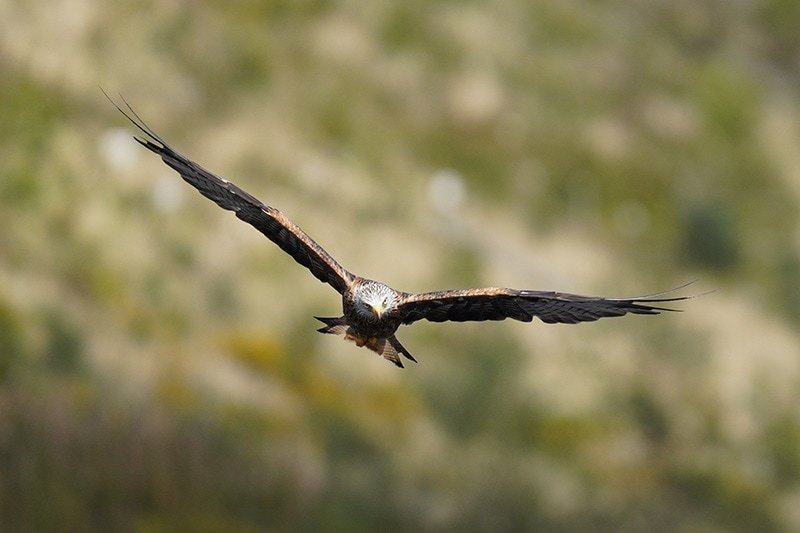
If you’d like to find out how this lens stacks up against the Sony FE 100-400 GM lens then head over to my 200-600 vs 100-400 comparison.
Key Specs
| Model Name: | SEL200600G |
| Format: | 35 mm full frame |
| Focal Length (mm): | 200-600 mm |
| Angle of View (35 mm): | 12°30’–4°10′ |
| Maximum Aperture: | F5.6–6.3 |
| Minimum Aperture: | F32–36 |
| Lens Groups / Elements: | 17–24 |
| Aperture Blades: | 11 circular |
| Minimum Focusing Distance: | 7.88 ft (2.4 m) |
| Maximum Magnification Ratio: | 0.2x |
| Lens Image Stabilization: | Yes (3 modes) |
| Filter Diameter: | 95 mm |
| Teleconverter Support: | Yes: 1.4x / 2x |
| Diameter: | 4.5″ / 114.3 mm |
| Length: | 12.625″ / 320.67 mm |
| Weight: | 74.7 oz. / 2,115 g |
Pros
- Fantastic build quality and weather sealing
- Excellent handling thanks to the internal zoom design
- Very fast and accurate autofocus
- Excellent image quality
- 1.4x and 2x teleconverter support
Cons
- Large and relatively heavy
- Small tripod foot that is not arca-swiss compatible
- Some chromatic aberration when shooting wide open
What’s in the Box
- Sony FE 200-600mm F5.6-6.3 G OSS lens
- Hood (model): ALC-SH157
- Lens front cap: ALC-F95S
- Lens rear cap: ALC-R1EM
- Tripod collar
- Soft case
- Lens strap
Review
If you would like to learn more about the Sony FE 200-600mm F5.6-6.3 G OSS lens lens then this excellent review by Olle Nilsson is worth taking the time to watch.
You might also enjoy my own video of this lens where I compare the 200-600 to the Sony 100-400 with the 1.4x teleconverter for birds in flight photography.
4. Sigma 150-600mm F5-6.3 DG DN OS Sports
The Sigma 150-600mm F5-6.3 DG DN OS Sports lens is slightly lower cost alternative to Sony’s 200-600.
Like with all Sigma lenses this lens is very well built and weather sealed against the elements. It offers a very versatile zoom range of 150-600 with a variable maximum aperture of F5-6.3.
Autofocus is reasonably fast and accurate but it’s not quite on par with Sony’s lenses.
Sharpness is very good across the zoom range and CA is well controlled. The built-in stabilization also helps to keep your images sharp.
Unfortunately the usual restrictions of no teleconverter support and a maximum frame rate of 15 fps apply to this third-party lens.
Although this lens is a cracking lens for the price, for just a few hundred dollars more the Sony FE 200-600 could be purchased instead, and if I had to choose between the Sigma and the Sony the Sony would win every time.
Key Specs
| Model Name: | S021 |
| Format: | 35 mm full frame |
| Focal Length (mm): | 150-600 |
| Angle of View (35 mm): | 16.4°-4.1° |
| Maximum Aperture: | F5-6.3 |
| Minimum Aperture: | F22-29 |
| Lens Groups / Elements: | 15 groups / 25 elements |
| Aperture Blades: | 9 (Rounded diaphragm) |
| Minimum Focusing Distance: | 58-280cm / 22.8–110.2in. |
| Maximum Magnification Ratio: | 1:2.9 (At a focusing distance of 180mm) |
| Lens Image Stabilization: | Yes |
| Filter Diameter: | 95mm |
| Diameter: | 4.3in. / 109.4mm |
| Length: | 10.5in. / 265.6mm |
| Weight: | 74.1oz. / 2100g |
Pros
- Well built telephoto zoom lens with robust weather sealing
- Useful controls
- Built in stabilization
- Autofocus is smooth, quiet, and fast
- Low distortion and vignette
- CA is reasonably well controlled
- Good sharpness across the zoom range
- Pleasing bokeh
- Well priced
Cons
- No teleconverter support
- Tracking performance not quite on par with Sony or Tamron’s offerings
- Maximum 15 fps
What’s in the Box
- Sigma 150-600mm f/5-6.3 DG DN OS Sports Lens for Sony E
- Sigma Lens Hood for 150-600mm f/5-6.3 DG DN Sports Lens
- Sigma Cover Lens Cap for 150-600mm f/5-6.3 DG DN OS Sports Lens for Leica L- and Sony E-Mount
- Sigma Soft Lens Case for 150-600mm f/5-6.3 DG DN OS Sports Lens
- Sigma TS-121 Tripod Socket
- Sigma LCF-95 III 95mm Lens Cap
- Sigma LCR II Rear Lens Cap for Sony E
- Limited 1-Year Manufacturer Warranty
Registration Extension: 3-Year
Review
To learn more about the Sigma 150-600mm f/5-6.3 DG DN OS Sports telephoto zoom lens this video review from DPReview is worth a watch.
5. Sigma 300-600mm F4 DG OS Sports Lens
The Sigma 300-600mm F4 DG OS Sports lens has been designed specifically for sports, action and wildlife photography.
The lens is constructed from 28 elements in 21 groups which includes 6 FLD and 1 SLD element, anomalous dispersion glass, high refractive index glass, and a water and oil-repellent front coating.
Autofocus is driven by a high-thrust HLA (high-response linear actuator) motor that drives a lightweight lens focus group located close to the camera body for improved balance and fast and accurate AF.
Built-in image stabilization provides 5.5 stops of stabilization at 600mm and includes two stabilization modes.
The lens barrel itself is built from magnesium alloy, and the lens hood is made of carbon, thermal insulation paint helps to reduce heat absorption.
This is an internal zooming lens which helps to maintain balance when zooming in and out on your subjects.
The lens includes a new function ring that offers two modes: Focus Preset Mode, by twisting the ring right or left focus will instantly shift to a pre-registered focus position. The Power Focus Mode helps with focusing the lens at a constant speed for applications like video.
There are also four AFL buttons, a focus mode switch, a focus limiter and OS mode switch and a custom mode switch.
There is also a drop-in filter holder for 40.5mm filters and Sigma has developed a new drop-in circular polarizer and a variable ND filter with 7 stops of adjustment to use with the lens.
Unfortunately as usual only the L-mount version is compatible with teleconverters not the Sony E-mount version. This is a limitation placed by Sony on third-party lenses.
The lens measures 167mm (6.6″) in diameter by 469.9mm (18.5″) long. It weighs in at a rather mighty 3,970g (140.0oz).
Specs
| Model Name: | S025 |
| Format: | 35 mm full frame |
| Focal Length (mm): | 300-600mm |
| Angle of View (35 mm): | 8.2-4.1° |
| Maximum Aperture: | F4 |
| Minimum Aperture: | F22 |
| Lens Groups / Elements: | 21 groups / 28 elements |
| Aperture Blades: | 13 (rounded diaphragm) |
| Minimum Focusing Distance: | 280(W)-450(T)cm / 110.3(W)-177.2(T)in. |
| Maximum Magnification Ratio: | 1:6 at f=470mm |
| Lens Image Stabilization: | Yes |
| Filter Diameter: | 40.5mm (rear filter) |
| Diameter: | 6.6in. / 167 mm (Sony E-mount) |
| Length: | 18.5in. / 469.9mm (Sony E-mount) |
| Weight: | 140.0oz. / 3,970g (Sony E-mount) |
Pros
- F4 maximum aperture across the zoom range
- Excellent build quality including robust weather sealing
- Fast and accurate autofocus
- Internal zoom
Cons
- Cannot be used with Sony’s teleconverters
- Lower burst rate on Sony’s top sports cameras compared to a Sony lens
- Very heavy at 140.0oz. / 3,970g
What’s in the Box
- Sigma 300-600mm F4 DG OS Sports Lens (Sony E)
- Case
- Lens Hood LH1615-01
- Cover Lens Cap LC-598E
- Rear Cap LCR III
- Shoulder Strap
- Tripod Socket TS-161
- Drop in Filter Holder RFH-21
Review
To learn more about the Sigma 300-600mm F4 DG OS Sports Lens lens I’d recommend watching this early preview from Jared Polen. There are not many reviews available at this time.
Check Price & Reviews: Sigma 300-600mm F4 DG OS Sports
At: B&H Photo | Amazon
6. Sigma 500mm F5.6 DG DN OS Sports
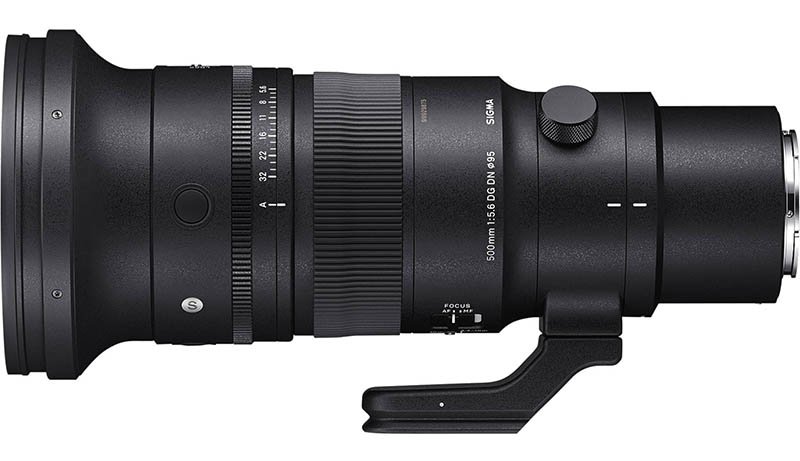
The Sigma 500mm F5.6 DG DN OS Sports is the only third-party telephoto prime lens currently available for Sony E-mount.
Sigma initially lent me this lens to tryout and I was so impressed with it that I decided to buy one for myself. Since it arrived my Sony FE 200-600 has been collecting dust.
The Sigma 500 weighs just 1,365g (with foot but without hood and caps). The lens hood of the Sigma 500 weighs 150g which takes the total weight up to 1,515g.
The Sigma features 3 customizable buttons, a focus limiter switch, AF/MF switch, OS switch with modes 1/2 and off.
The Sigma also has a Custom switch with the options (OFF | C1 | C2). Unfortunately unlike L-mount shooters who can use the Sigma USB Dock to customize these functions, Sony shooters are stuck with the default settings. C1 is called “Dynamic View” and offers a recognizable OS effect in the viewfinder to help with composition. C2 is called “Moderate View” and focuses more on stabilizing the image at capture and less on stabilizing the viewfinder.
There’s also de-clickable and lockable aperture ring on the Sigma, this will probably be appreciated more by videographers than photographers.
A silky smooth focus ring is located towards the rear of the lens just behind the aperture ring.
The lens foot is removable and has integrated dovetails making it arca-swiss compatible. However, it could do with being a little larger because there’s not a lot to hold onto if you want to carry the lens by its foot.
As you would expect from a Sigma prime lens the image quality is very good and the autofocus is accurate and fast. So far I’ve mainly used it on my A1 and it had not trouble tracking birds in flight.
If you are curious about how it compares to the 200-600 then I’ve started putting together a Sigma 500mm VS Sony FE 200-600 Comparison that you might find interesting.
Below you’ll find a few images that I’ve shot with this lens. You can find further images over on the forum in our Sigma 500 F5.6 DG DN OS Sports Image Thread.
Key Specs
| Model Name: | S024 |
| Format: | 35 mm full frame |
| Focal Length (mm): | 500 mm |
| Angle of View (35 mm): | 5.0° |
| Maximum Aperture: | F5.6 |
| Minimum Aperture: | F32 |
| Lens Groups / Elements: | 20 elements in 14 groups (3 FLD, 2 SLD) |
| Aperture Blades: | 11 (rounded diaphragm) |
| Minimum Focusing Distance: | 320cm / 126.0in. |
| Maximum Magnification Ratio: | 1:6 |
| Lens Image Stabilization: | Yes |
| Filter Diameter: | 95mm |
| Teleconverter Support: | No |
| Diameter: | 4.2in. / 107.6mm |
| Length: | 9.3in / 236.6mm |
| Weight: | 48.1oz. / 1,365g without hood |
Pros
- Well built and weather sealed
- Very light and compact for a 500mm F5.6 prime telephoto lens
- Useful switches and buttons
- Aperture ring
- Fast and quiet autofocus motor
- Very effective Optical Stabilizer
- Very sharp across the frame
- Less vignette and distortion than zoom lenses
- No fringing visible
- lovely bokeh
- Very good flare resistance
Cons
- No teleconverter support
- Limited to 15 frames per second due to Sony’s limitation on 3rd party lenses.
What’s in the Box
- Sigma 500mm f/5.6 DG DN OS Sports Lens (Sony E)
- Case
- LH1034-02 Lens Hood
- Sigma LCF-95 III 95mm Lens Cap
- Sigma LCR II Rear Lens Cap for Sony E
- Sigma TS-151 Tripod Socket
- Lens Strap
- Allen Wrench
- 2 x Screw
- Limited 4-Year Manufacturer Warranty
Review
To learn more about the Sigma 500mm F5.6 DG DN OS Sports lens I’d recommend watching this review from Dustin Abbott.
7. Tamron 150-500mm F5-6.7 Di III VC VXD
The Tamron 150-500mm F5-6.7 Di III VC VXD lens offers a lower cost alternative to Sony’s FE 200-600 for wildlife photography.
The lens is well built and includes some very useful controls on the lens body including a zoom lock switch, AF/MF on/off switch, focus limiter and an OS switch with 3 modes.
The built in stabilization really helps to keep your shots steady and in the frame when shooting at the longer lens of this versatile zoom lens.
The Tamron 150-500mm delivers very good sharpness throughout the zoom range, pleasing bokeh and good CA control all for a very reasonable price.
However, there are the usual Sony enforced restrictions due to this being a third-party lens. So there is no teleconverter support and the maximum frame rate is limited to 15 fps.
Key Specs
| Model Name: | A057S |
| Format: | 35 mm full frame |
| Focal Length (mm): | 150-500mm |
| Angle of View (35 mm): | 16° 25′-4° 57′ |
| Maximum Aperture: | F5-6.7 |
| Minimum Aperture: | F22-32 |
| Lens Groups / Elements: | 16 group / 25 elements |
| Aperture Blades: | 7 |
| Minimum Focusing Distance: | 0.6m (WIDE) 1.8m (TELE) |
| Maximum Magnification Ratio: | 1:3.1 (WIDE) 1:3.7 (TELE) |
| Lens Image Stabilization: | Yes |
| Filter Diameter: | 82mm |
| Diameter: | 3.66in. / 93mm |
| Length: | 8.25in. / 209.6mm |
| Weight: | 60.8 oz. / 1725 g (without tripod foot) |
Pros
- Well built telephoto zoom lens
- Useful controls on the lens body
- Autofocus is quick, quiet, and accurate
- Built in stabilization
- Low distortion and vignette
- CA is well controlled
- Good sharpness across the zoom range
- Nice bokeh
- Fair price
Cons
- No teleconverter support
- Maximum 15 fps
- No focus hold button
What’s in the Box
- Tamron 150-500mm f/5-6.7 Di III VC VXD Lens (Sony E)
- Round Lens Hood
- Front Lens Cap
- Rear Lens Cap
- Arca-Type Tripod Foot
- Limited 6-Year Manufacturer Warranty
Review
To learn more about the Tamron 150-500mm F5-6.7 Di III VC VXD lens I’d recommend watching this excellent review from Duade Paton.
Check Price & Buyer Reviews for the Tamron 150–500mm F5–6.7 Di III VC VXD Lens
At: Amazon | B&H Photo | Wex Photo UK
8. Sony FE 100-400mm F4.5-5.6 GM OSS
I purchased the Sony FE F4.5-5.6 100-400mm G Master on the first day that it was released and it has probably spent more time attached to my cameras than any other telephoto zoom lens I own, well at least it did until I bought the Sony FE 200-600mm F5.6-6.3 G OSS lens.
Being a GM lens the build quality is excellent and despite its focal length it weighs in at only 1395 g (49.21 oz.) and measures 205 mm (8.07 in.) in length. This makes it a very good option for travelling with and I did just that when I took this lens to Borneo for a couple of weeks (my Borneo adventure).

The lens is weather sealed against dust and moisture and I had no issues with condensation even in Borneo which was extremely hot and humid.

Sharpness across the frame is excellent and DxOMark rate this as the sharpest lens in the 100-400mm focal range.
The zoom lens is compatible with both the Sony FE 1.4x and 2.0x teleconverters, helping to extend its reach up to 560mm with the 1.4x and up to 800mm with the 2x.

The autofocus is fast, accurate and virtually silent and the lens also features optical image stabilization built-in with 2 panning modes.
On the lens body you’ll find both a focus and zoom ring, there’s also a zoom smoothness adjuster that provides mechanical control of zoom ring torque. Unfortunately there is no zoom lock switch and this lens can creep when pointing towards the ground.
You will also find an array of switches on the side of the lens which include: AF/MF switch, AF distance limiter to reduce focus searching to 3 meters and greater, OSS (Optical Steady Shot) on and off switch which also overrides the build in IBIS of your camera if present, and the panning mode switch.
Key Specs
| Model Name: | SEL100400GM |
| Format: | 35 mm full frame |
| Focal Length (mm): | 100-400 mm |
| Angle of View (35 mm): | 24°-6°10′ |
| Maximum Aperture: | F4.5-5.6 |
| Minimum Aperture: | F32-40 |
| Lens Groups / Elements: | 16-22 |
| Aperture Blades: | 9 circular |
| Minimum Focusing Distance: | 3.22 ft / 0.98 m |
| Maximum Magnification Ratio: | 0.35x |
| Lens Image Stabilization: | Yes (2 modes) |
| Filter Diameter: | 77 mm |
| Teleconverter Support: | Yes: 1.4x / 2x |
| Diameter: | 3-3/4″ / 93.9 mm |
| Length: | 8-1/8″ / 205 mm |
| Weight: | 49.21 oz. / 1395 g (without tripod mount) |
Pros
- Very sharp from 100mm to 400mm
- Fast and silent autofocus
- Well controlled vignetting and chromatic aberration
- Pleasing bokeh
- Well balanced
- Dust and moisture resistance
- Zoom ring tension adjustment
- Flare resistance
Cons
- Focus ring is too loose
- Expensive
What’s in the Box
- Hood (model): ALC-SH151
- Lens front cap: ALC-F77S
- Lens rear cap: ALC-R1EM
- Case
- Tripod mount
Review
If you’d like to learn more about the Sony FE F4.5-5.6 100-400mm G Master lens then you’ll find my complete review here. This review from Jay is also worth a watch.
9. Sony FE 400mm F2.8 GM OSS
I don’t own this lens myself but I know from many Alpha Shooters who do that it is extremely sharp across the frame and has terrific autofocus performance even with the 1.4x and 2x teleconverters attached that take the reach to 560mm and 800mm respectively.
For a large prime lens it still manages to weigh in at only 2895g (102.12 oz.).
If there was one negative it’s definitely the price. At $11,998.00 in the US or £10,499.00 in the UK, many of us will need to start selling body parts to afford it!
Key Specs
| Model Name: | SEL400F28GM |
| Format: | 35 mm full frame |
| Focal Length (mm): | 400 mm |
| Angle of View (35 mm): | 6°10′ |
| Maximum Aperture: | F2.8 |
| Minimum Aperture: | F22 |
| Lens Groups / Elements: | 17-23 Including one filter |
| Aperture Blades: | 11 circular |
| Minimum Focusing Distance: | 8.86 ft (2.7 m) |
| Maximum Magnification Ratio: | 0.16x |
| Lens Image Stabilization: | Yes (3 modes) |
| Filter Diameter: | 40.5 (slot-in) |
| Teleconverter Support: | Yes: 1.4x / 2x |
| Diameter: | 6-1/4″ / 158.1 mm |
| Length: | 14-1/4″ / 359 mm |
| Weight: | 102.2 oz / 2,895 g |
Pros
- Outstanding build quality and weather sealing
- Sharpness wide-open
- Chromatic abberation control
- Autofocus speed and accuracy
- Weight for a 400mm F2.8 prime lens
- Teleconverter support
Cons
- Very expensive
What’s in the Box
- Sony FE 400mm F2.8 GM OSS lens
- Front Lens Cap
- Sony ALC-R1EM Rear Lens Cap
- Sony ALC-SH155 Lens Hood
- Lens Strap
- Hard Case
- Case Strap
Review
He is a Sony Ambassador but Mark Galer definitely has one of the best reviews of the Sony FE 400mm F2.8 GM OSS lens and is the one that I’d recommend watching to learn more about it.
10. Sony FE 300mm F2.8 GM OSS
The Sony FE 300mm F2.8 GM OSS is Sony’s most recent telephoto prime lens to hit the market.
This 300mm F2.8 prime lens weighs only 1470g (51.9oz) which makes it the lightest in its class and the same weight as the original Sony FE 70-200mm F2.8 GM.
The dual XD linear motors are extremely fast and can even keep up with shooting 120 fps that the Sony A9III is capable of.
Image quality is as good as it gets and the lens works very well with both the 1.4x and 2x teleconverters.
You can find some sample images from this lens over on the forum in our Sony FE 300mm F2.8 GM OSS Image Thread.
Key Specs
| Model Name: | SEL300F28GM |
| Format: | 35 mm full frame |
| Focal Length (mm): | 300 mm |
| Angle of View (35 mm): | 8°10′ |
| Maximum Aperture: | F2.8 |
| Minimum Aperture: | F22 |
| Lens Groups / Elements: | 17 groups, 21 elements (including one filter) |
| Aperture Blades: | 11 |
| Minimum Focusing Distance: | 2 m (6.57 ft) |
| Maximum Magnification Ratio: | 0.16x |
| Lens Image Stabilization: | Yes (3 modes) |
| Filter Diameter: | 40.5mm |
| Teleconverter Support: | Yes: 1.4x / 2x |
| Diameter: | 4.9in. / 124mm |
| Length: | 10.45in. / 265 mm |
| Weight: | 51.9 oz. / 1470 g (Without tripod mount) |
Pros
- Great Sony GM build quality and weather sealing
- Very sharp even at F2.8
- Good CA control
- Very fast and quiet autofocus
- Lightweight and compact
- Supports both 1.4x and 2x teleconverters
Cons
- None
What’s in the Box
- Sony FE 300mm f/2.8 GM OSS Lens (Sony E)
- Front Lens Cap
- Sony ALC-R1EM Rear Lens Cap
- ALC-SH175 Lens Hood
- Tripod Mount
- Drop-In Filter
- Lens Strap
- Soft Case
- Limited 1-Year Manufacturer Warranty
Review
To learn more about the Sony FE 300mm F2.8 GM OS telephoto prime lens I’d recommend watching this review from Gerald Undone.
Check Price & Buyer Reviews: Sony FE 300 F2.8 GM Lens
At: B&H Photo | Amazon
11. Sony FE 70-200mm F4 Macro G OSS II
The Sony FE 70-200mm F4 Macro G OSS Ⅱ telephoto zoom lens is the second generation of one of Sony’s earliest E-mount lenses first released in 2014.
Sony say that they have improved the AF by 20%. It’s also 15% lighter and 15% shorter that the Mark I. The 1.4x and 2x teleconverters are now also supported which were not supported with the Mark I lens.
Focus is powered by two independently moving focus groups driven by four XD ‘High thrust’ linear motors (two per group) which allow the lens to focus down to just 26 cm (10.2″).
A maximum magnification of 0.5x is the reason this lens has Macro in its name. Although not a true 1:1 macro lens if you attach the 2x teleconverter you will now have 1x magnification.

The lens is composed of 19 elements in 13 groups, including one advanced aspherical element, three extra-low dispersion (to reduce chromatic aberration), one ED aspherical element and one conventional aspherical lens.
On the lens body you’ll find independent control rings for focus and zoom. There’s a full-time DMF on/off switch, a focus-range limiter, Mode 1, Mode 2, and Mode 3 optical image stabilization, an AF/MF switch and a zoom lock.

Optically the lens delivers exceptional sharpness and contrast throughout the zoom range, low distortion and vignette and stunning bokeh.
I own both the Mark I and Mark II versions of this lens and hope to put together an in-depth comparison very soon. Until then you’ll just have to take my word that’s it’s definitely worth the upgrade!
Key Specs
| Model Name: | SEL70200G2 |
| Format: | 35 mm full frame |
| Focal Length (mm): | 70-200 mm |
| Angle of View (35 mm): | 34°-12° 30′ |
| Maximum Aperture: | F4 |
| Minimum Aperture: | F22 |
| Lens Groups / Elements: | 13-19 |
| Aperture Blades: | 9 circular |
| Minimum Focusing Distance: | 0.26-0.42 m(0.86-1.38 ft) |
| Maximum Magnification Ratio: | 0.5x |
| Lens Image Stabilization: | Yes |
| Filter Diameter: | 72 mm |
| Diameter: | 3-1/4″ / 82.2 mm |
| Length: | 5-7/8″ / 149 mm |
| Weight: | 28.1 oz. / 794 g |
Pros
- Small and compact
- Good build quality and weather sealing
- Very fast and quiet autofocus motors
- Compatible with Sony’s 1.4x and 2x teleconverters
- Exceptional resolution and contrast throughout the zoom range
- Lovely bokeh
- Low distortion and vignette
- Flare resistance
- Minimal focus breathing
- Removable tripod collar
Cons
- Pincushion distortion throughout the zoom range
- Tripod foot not Arca-compatible (like all of Sony’s lenses)
- External zoom but this does make it more travel and backpack friendly
What’s in the Box
- Sony FE 70-200mm F4 Macro G OSS Ⅱ lens
- Lens hood: ALC-SH176
- Lens front cap: ALC-F72S
- Lens rear cap: ALC-R1EM
Review
If you would like to learn more about the Sony FE 70-200mm F4 Macro G OSS Ⅱ lens then I’d highly recommend this excellent review from Dustin Abbott.
12. Sony FE 70-200mm F2.8 GM OSS II
The Sony FE 70-200mm F2.8 GM OSS Mark II lens represents a significant upgrade over its Mark I predecessor, delivering improvements both in optical performance and physical design.
Thankfully Sony has retained the internal zoom design of this telephoto lens but also reduced the weight by a remarkable 15.34 oz / 435 g, making it approximately 29% lighter than the Mark I.
Equipped with four of Sony’s original XD (extreme dynamic) Linear Motors, the autofocus speed is boosted by up to 4x compared to the previous model. When tracking subjects in motion, such as a short-distance runner, the Mark II lens improves tracking while zooming by approximately 30% compared to its predecessor.
The Mark II lens introduces new video features, including reduced focus breathing, focus shift compensation during zooming, and axis shift compensation during zooming.
The lens body is designed with convenient controls, such as independent rings for focus, zoom, and aperture, accompanied by a click on/off switch for the aperture ring and an iris lock. Other notable features include a full-time DMF (Direct Manual Focus) on/off switch, a focus-range limiter, optical image stabilization with Mode 1, Mode 2, and Mode 3 options, and an AF/MF switch.
The optical performance of this lens is truly exceptional, offering outstanding sharpness and contrast across the entire zoom range.
It exhibits minimal distortion and vignetting. Additionally, the lens produces stunning bokeh, creating beautiful background blur that really helps to make your subjects pop.
This lens also supports Sony’s 1.4x and 2x teleconverters. If you’d like to see how well it performs with the 2x teleconverter attached then head over to my Sony 100-400 vs Sony 70-200 F2.8 GM II + 2x Comparison.
As an owner of both the Mark I and Mark II versions of this lens, I can confirm that the Mark II is a substantial upgrade over its predecessor. It surpasses the Mark I in terms of performance and handling, although it should do because it costs a little bit more!
Key Specs
| Model Name: | SEL70200GM2 |
| Format: | 35 mm full frame |
| Focal Length (mm): | 70-200 mm |
| Angle of View (35 mm): | 34°-12° 30′ |
| Maximum Aperture: | F2.8 |
| Minimum Aperture: | F22 |
| Lens Groups / Elements: | 14-17 |
| Aperture Blades: | 11 circular |
| Minimum Focusing Distance: | 0.4 – 0.82 m (1.32 – 2.69 ft) |
| Maximum Magnification Ratio: | 0.3 x |
| Lens Image Stabilization: | Yes |
| Filter Diameter: | 77 mm |
| Diameter: | 3-1/2″ / 88 mm |
| Length: | 7-7/8″ / 200 mm |
| Weight: | 1045 g (36.9 oz.) (Without tripod mount) |
Pros
- 29% lighter than the MK 1 lens
- Great build quality and weather sealing
- Fantastic autofocus
- Compatible with Sony’s 1.4x and 2x teleconverters
- Exceptional resolution and contrast throughout the zoom range
- Lovely bokeh
- Low distortion and vignette
- Flare resistance
Cons
- Expensive
- Tripod foot not Arca-compatible
What’s in the Box
- Sony FE 70-200mm F2.8 GM OSS II lens
- Tripod collar Lens hood: ALC-SH167
- Lens front cap: ALC-F77S
- Lens rear cap: ALC-R1EM
- Lens case
Review
If you would like to learn more about the Sony FE 70-200mm F2.8 GM OSS II lens then I’d highly recommend this excellent review from Gerald Undone.

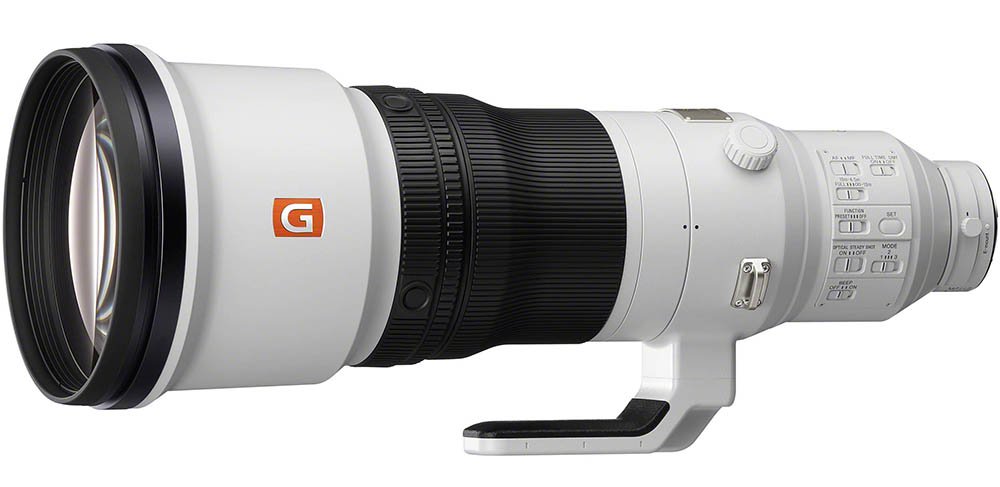
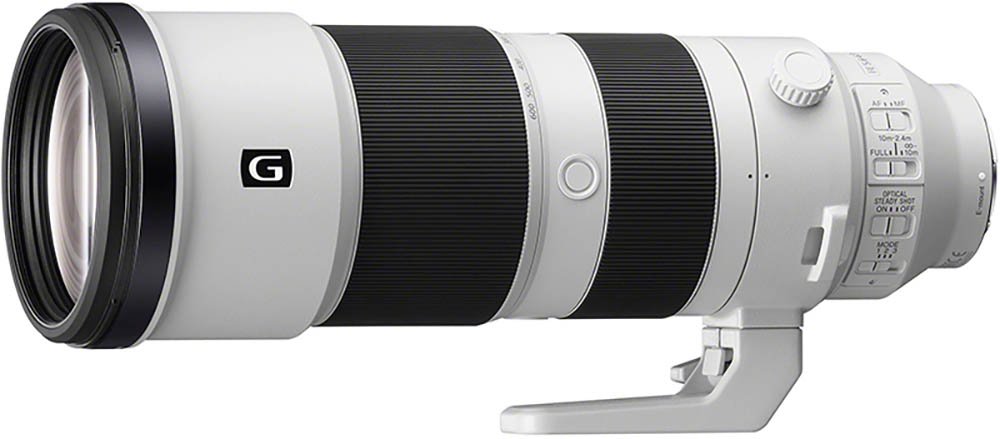

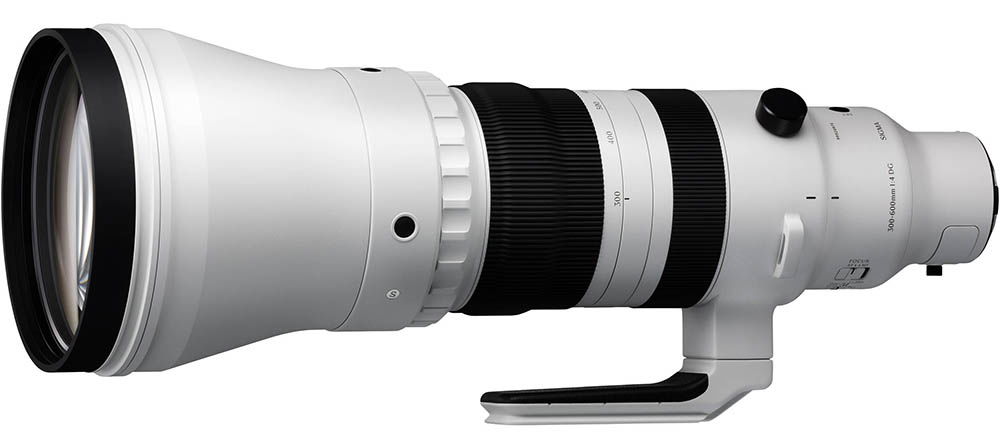


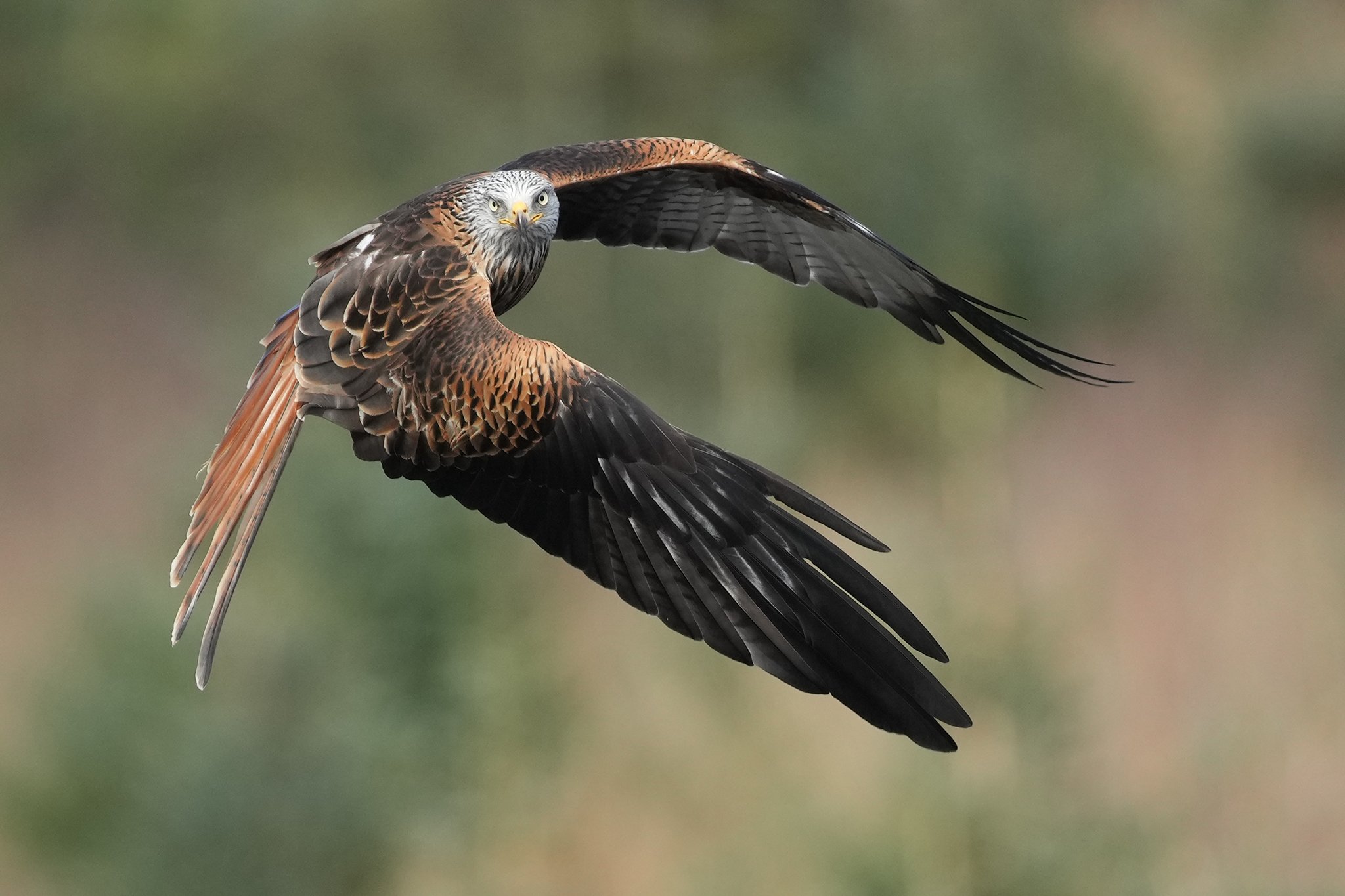



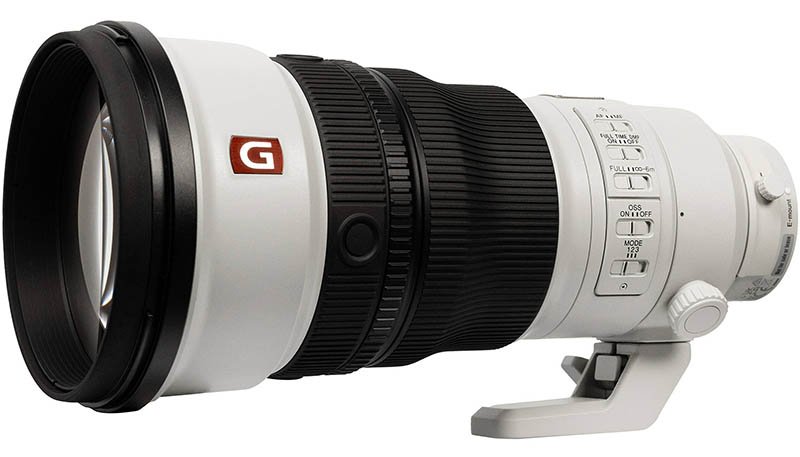
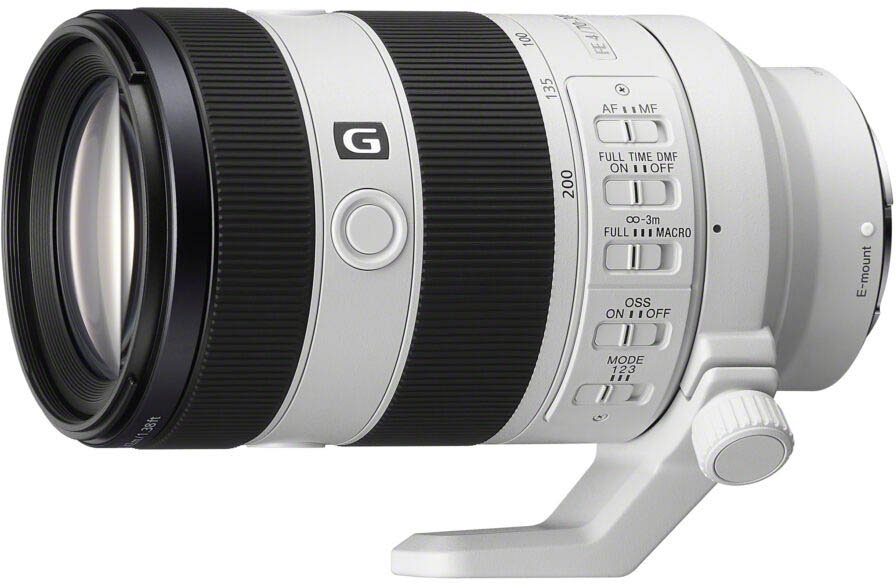
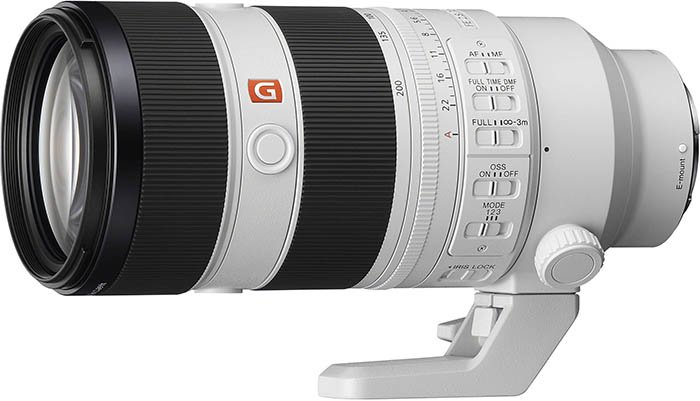

Leave a Reply